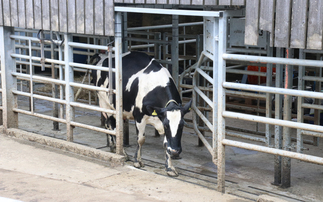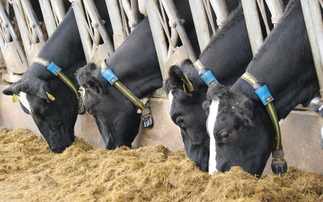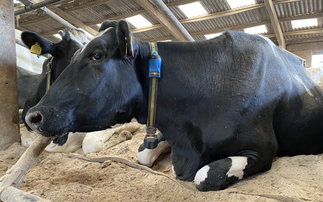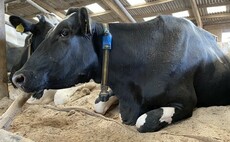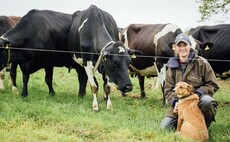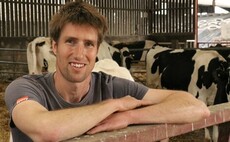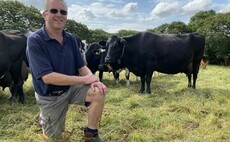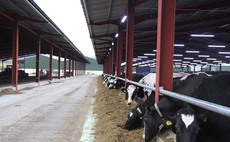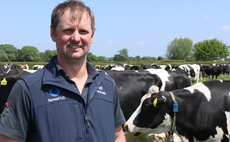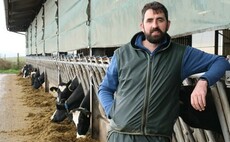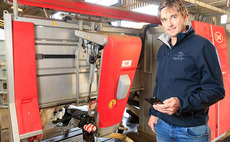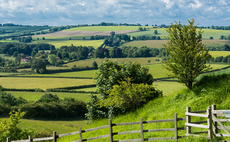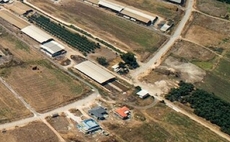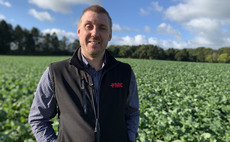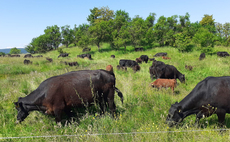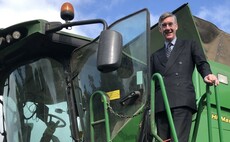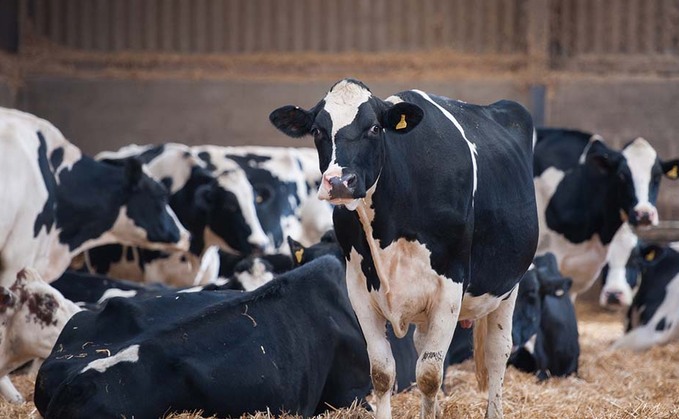
Recent changes to the way the herd at Brinsbury College is managed, milked and monitored have resulted in milk yields increasing by over 18% in the last 12 months.
Stable Barn Farm on the Brinsbury College campus near Pulborough in West Sussex is managed by Alex Hollands and his team who are also part of the college's educational staff. In addition to providing a resource for teaching City and Guilds Agriculture to Levels 1, 2 and 3, the team also manages the farm's 230 hectares which includes a 120-hectare grazing platform for the farm's 145 Dairy Shorthorns and Ayrshires and 160 Lleyn-cross-Texel sheep.
In the last year, a new parlour and a few key changes to the way the herd is fed and managed have resulted in milk yields increasing by as much as 1,000 litres per cow, with the herd currently producing an average of 6,400 litres per lactation at 4.6% butterfat and 3.4% protein.
"The biggest single change was the installation of a new parlour with automatic cluster removers, milk meters and auto-EiD which enables us to feed to yield," Alex Hollands explains. "We try to give students as much hands-on experience as we can which is why the parlour has traditionally been fairly low-tech. However, with up to eight students in the parlour it was a challenge to make sure everything was being milked out properly, so we installed ACRs in the new parlour to eliminate any over or under-milking. That alone has yielded an extra kilo of milk per cow across the entire herd."
Alex and his team have also instigated some crucial changes to the herd's feeding regime: until a year ago the herd's ration was based solely on freshly grazed grass and grass silage with an additional 0.8 tonnes of concentrates per cow per year.
"Following the parlour upgrade we're using the milk meters to provide live data to feed to yield and have introduced whole-crop and maize silage to the winter ration," Alex explains. "We're now feeding up to 1.5 tonnes of concentrates per animal, but it's the maize silage which has really unlocked the herd's potential. We've also moved away from some of the more popular high sugar grasses in favour of leys which give a better quality of silage and which are more tolerant to being grazed 240 days a year. As a result, we're still producing 60% of milk from forage despite the 1,000kg milk increase."
In addition to the infrastructure improvements and new feeding regime, Alex has also introduced a herd monitoring system to aid heat detection, to highlight any potential health issues within the herd, and to enable him and his staff to manage the herd more accurately.
"On top of their full farming workloads, all my staff also have to teach on a daily basis," Alex describes. "As any herd manager knows, there often aren't enough hours in the day, but with students thrown into the mix it can be even trickier to get everything done. That meant we weren't spending enough time looking for natural bulling activity which meant our fertility scores weren't where they needed to be. As a result, the herd's autumn and spring calving blocks were both up to 12 weeks long instead of the six weeks we need them to be."
With no students on the farm during the first lockdown in 2020, Alex and his team were able to spend more time with the cows. "Those six months were a real eye opener," he continues. "We saw so many more heats which told us we needed to improve the way we were working. I therefore looked at several heat detection systems and used a government grant to offset the cost of 160 SenseHub collars which we installed in April last year."
In addition to the collars which monitor activity and rumenation around the clock, two SenseHub controllers (which collect data from the collars and analyse it for signs of heat or poor health) were also installed to provide 360-degree coverage of the farm buildings and most of the herd's grazing platform.
"We initially bought the SenseHub system to improve our fertility scores, but it has also proven invaluable in terms of identifying when cows are under the weather so that we can treat them sooner," Alex says.
"Prior to fitting the collars, we had a tendency to serve a little too early which meant we weren't getting the best AI results. It took a while for us to get used to waiting for SenseHub to tell us a cow was in oestrus, but we now trust the system 100% and only inseminate when the app tells us to. We're getting more cows in calf to AI which means we can spend more time worrying about other aspects of the herd's daily routine instead."
The College's vet, Maarten Boers of The Livestock Partnership, agrees with Alex's sentiments: "As more farms turn to using technology such as SenseHub we are seeing fewer PD negatives," he explains. "That's because, as farms get bigger and staff get more and more pushed for time, attention to detail can and often does slip. Systems such as SenseHub can mitigate the potential for this to result in poor fertility scores by spotting heats more accurately to ensure cows are inseminated at the optimum time. Herd monitoring systems can also reduce the incidence and severity of conditions such as clinical mastitis, milk fever and acidosis by proactively highlighting health problems at a very early stage, often before any physical symptoms have developed."
"It all means were spotting heats more effectively, getting cows back into calf more efficiently and calving heifers sooner which means each calving block is gradually getting tighter," Alex adds. "We're also spending less time and money getting sick cows back to full health. Managing the herd is now that bit easier, especially in the spring when calving coincides with lambing, and we're in a good position to keep making incremental gains to the herd's overall performance."
PHOTOS
Alex Hollands and his team have introduced several management changes which have successfully improved the herd's performance.
Heat detection, insemination timing and conception rates have all improved since the College's cows and heifers were equipped with a SenseHub collar.
Dan Finchett of Allflex and Alex Hollands discuss the herd's productivity improvements in the farm's straw yard accommodation.
As well as highlighting heats, SenseHub also monitors rumenation patterns with a rapid fall in feed intake indicative of the onset of a potential health problem.









